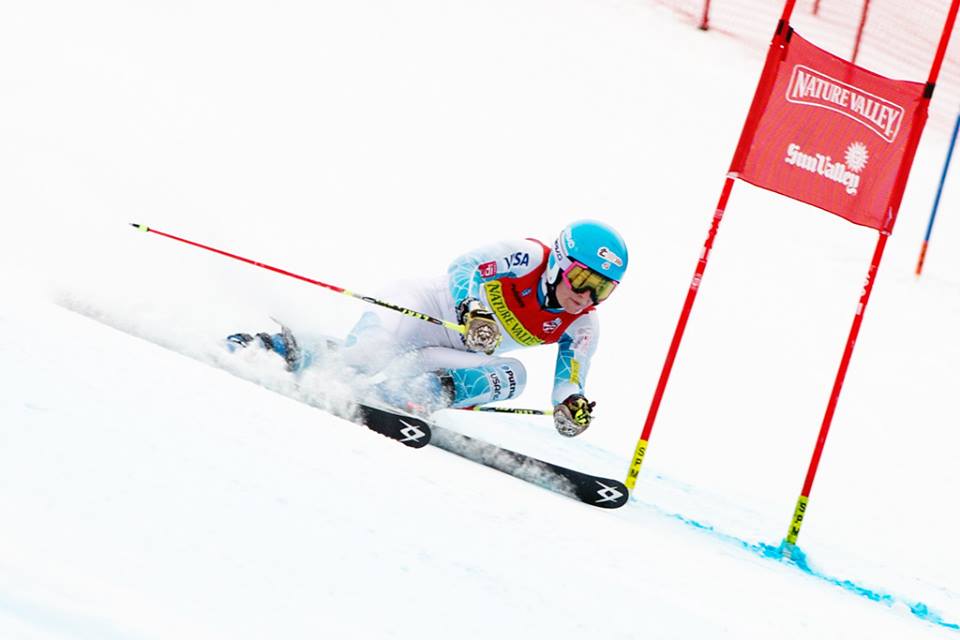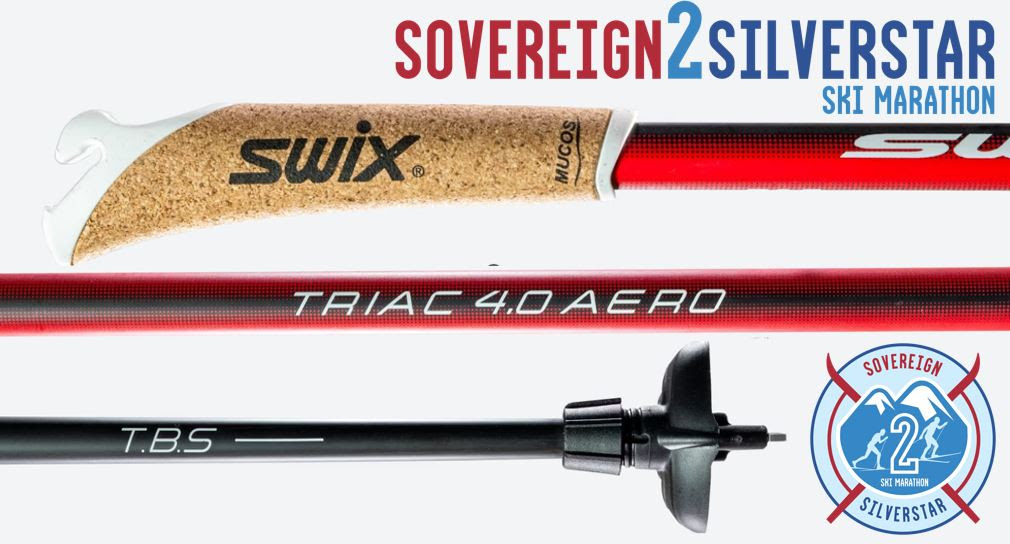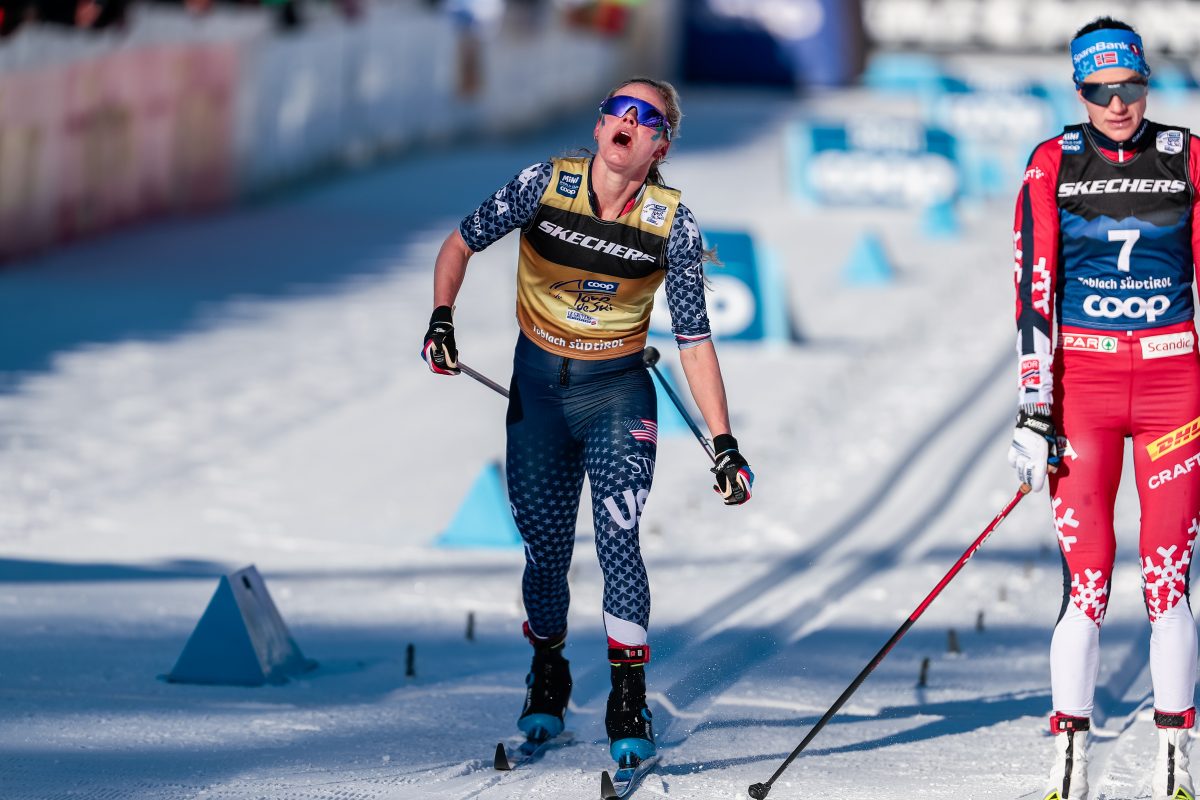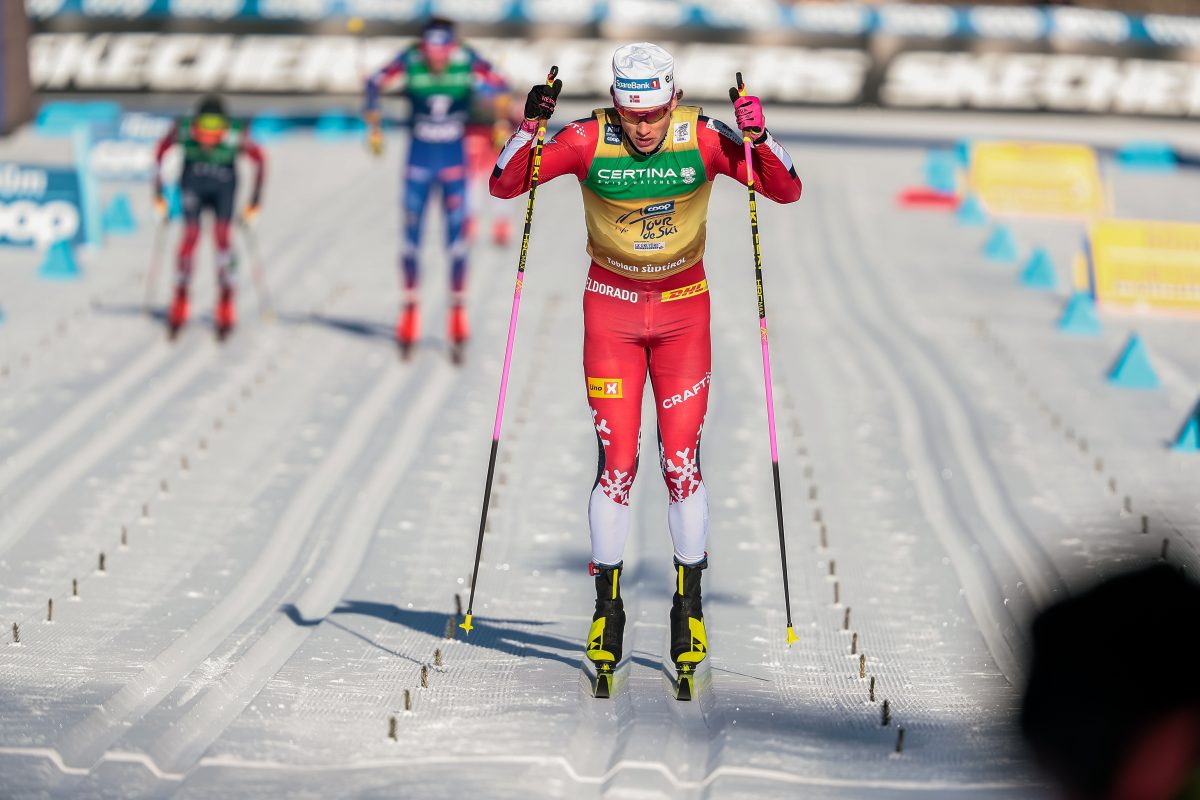
“The biggest issue with the ski team is that they do not support athletes through thick and thin. They support the very top athletes well but other than that everyone else is constantly stressed out about re-qualifying for the team or raising enough money to be able to compete that season.”
— Tim Kelley, 2015 World Championships U.S. alpine team member, UVM alumnus & assistant coach
“It is very hard to watch some American athletes get everything and others get nothing. But I try to focus on surrounding myself with supportive people, keep training hard and ski as fast as I can. To me, there is nothing more fun in the whole world than skiing!”
— Megan McJames, two-time Olympic alpine skier, four-time World Championships competitor
This spring, U.S. Ski & Snowboard announced its nominations for the cross-country national team. It also released qualification standards for the 2018 Olympics in PyeongChang, South Korea.
Both created discussion in the cross-country ski world. The national-team nominations relied heavily on discretion on the men’s side; several athletes very close to making the objective criteria were not nominated. The Olympic criteria leave few direct options for qualification available to non-U.S. Ski Team (USST) athletes or those sent to the World Cup by staff discretion.
Some of these strategies by the cross-country team leadership seem to contradict policies emphasized at the U.S. Ski & Snowboard level. But others might be consistent with how decisions are made in other disciplines.
To try to get a better understanding of whether that was the case, FasterSkier checked in with two alpine skiers: 2015 World Championships team member Tim Kelley, a now-retired slalom specialist who is coaching at the University of Vermont (UVM); and Megan McJames, a veteran giant slalom specialist who has been racing independently for several years.
Tim Kelley was not Ted Ligety, and Megan McJames is not Mikaela Shiffrin. Their perspectives are both based on their own experience, which is of bouncing on and off the USST and being selected to race internationally even when they were not national team members.
Who Deserves National Team Support?
That experience isn’t a mere byproduct of U.S. Ski & Snowboard policy. It’s by design as the organization tries to prioritize supporting young athletes with potential and older athletes who are stars – but cutting off development funds at some point after certain athletes reach the senior ranks.
It’s a strategy that might sound familiar to cross-country skiers.
Luke Bodensteiner, U.S. Ski & Snowboard’s Executive Vice President for Athletics, explained in an interview this spring that in his view, just being good enough to make a championship event doesn’t mean that his organization should necessarily invest in an athlete.
“We are probably not as efficient [as we could be] in terms of putting resources behind specific athletes,” he said. “I believe we could have fewer athletes across the board … It’s a bit of a cultural adjustment. There was a time when it was like, take your six best athletes – in our estimation that’s not effective.”
And so, across disciplines, U.S. Ski & Snowboard has developed criteria to say what “good enough” is. If the second-best or third-best athletes in the country don’t meet those criteria, then, well, teams are smaller.
(They are not alone in this strategy; teams such as Canadian cross-country skiing and U.S. biathlon have gone through periods with very few senior women supported, for instance.)
Athletes might not always agree with Bodensteiner’s assessment. Whether they are winning or not, U.S. Ski & Snowboard keeps picking them to represent their country; yet they aren’t recognized with national team status or support.
“I never had World Cup podiums, but I am proud of my career and how I battled through injury and keep grinding it out,” wrote Kelley, who placed 23rd in his lone World Championships race in 2015 (as an independent racer) and had a 12th-place World Cup slalom result (as a USST member) in 2016, his final season of competition.
Age-Specific Performance Standards
The alpine national team criteria are fairly unique in taking age into account.
The cross-country criteria do as well, but not to the same extent: they offer team membership to athletes with podium finishes at World Junior or U23 Championships, but no age-specific World Cup standards.
Alpine is different. For instance, have a look at the 2017/2018 criteria. For all ages, the requirement to make the A-team is the same: a top-25 World Cup ranking in a single discipline, or a top 10 (for women) or top 15 (for men) World Cup ranking in alpine combined.
After that, there is a tiered system. To make the B-team, women born in 1993 or earlier – so anyone older than 24 in this competition season – have to be ranked top 30 in the World Cup in a single discipline. Those born in 1994 can be ranked top 35, or have a top 45 World Ranking list standing. Born in 1995? Top 45 on the World Cup, or that World Ranking list. 1996 or younger? Top 50 on either list, or win a NorAm title.
There’s not a lot of leeway.
If you’re older than 24 and are ranked 26th in your discipline, it can be tough cookies. That happened to Resi Steigler, who was cut after a season where she was ranked 29th on the World Cup in slalom.
“It’s not easy being an outsider,” Stiegler, who kept racing and never finished worse than 27th in the World Cups she entered the next season, told Ski Racing’s Warner Nickerson. “To wonder who stopped believing in me and to wonder who doesn’t want me there.”
“This is exactly how I felt when I was on the chopping block,” Nickerson wrote in the piece.
Stiegler was renominated to the A-team later, but it brings up the issue of whether she would have performed better, and represented the U.S. better, if she had more consistent support through the ups and downs – would she have returned to her best level sooner without all that doubt and stress?
“The ski team should take on that burden and allow the athletes to focus on their training without the other distractions,” Kelley believes.
Because he had that experience too. Despite being dropped from the USST – again – after the 2016 season where he had the 12th-place finish, Kelley had secured World Cup start rights for the 2016-2017 season after being the runner-up in the NorAm slalom rankings in 2016. He would have had to go it alone again on Redneck Racing, the team he founded with his brother Robby.
He could have done it. The deciding factor in his retirement was that he underwent a fourth surgery to address recurring back problems. That was one surgery too many and at 30 years old he decided to call it quits.
But many athletes his age in a similar position might be pushed out of the sport even without the injury issues Kelley faced, he said.
“Unfortunately it takes a lot of determination and creative fundraising to keep competing at a high level outside the [USST], and actually even more inside the ski team since they cut funding for everyone except for the A-team (athletes top 25 in a disciple in the world),” he added.
The lack of financial support for ‘B’ team members might also sound familiar to cross-country skiers.
Overall, the inflexibility in supporting athletes didn’t make sense to Kelley.
“I think the age stuff is ridiculous and pushes people out of the sport,” he wrote. “The ski team did all these studies that showed what age you had to accomplish certain bench marks and claimed that if you didn’t win a NorAm title by age 21, or score World Cup points by age 23 that you would never ‘make it’ in the sport. Which seems silly to me because if you cut everyone that doesn’t hit the benchmarks and they retire, of course they are not going to ‘make it’… A lot of very talented athletes retire too early because of the financial burden put on them by the U.S. Ski Team, and I believe that is the reason we have a few star athletes but not as much depth as other countries that support their athletes financially.”
Representing Your Country
McJames, now 29, was a top junior racer but was cut from the national team in 2012 and hasn’t gotten back on it. She has tried to stop thinking about the criteria she would need to do so.
“When I set my goals I do not take into account USST criteria,” she wrote in an email. “There are pros and cons to being an independent athlete, but the best part is being able to design a program that only takes into account what is best for me athletically.”
Since being cut from the national team, McJames has scored World Cup points every season except for one. She finished 30th in giant slalom at the 2014 Olympics in Sochi, Russia, and 21st at last year’s World Championships in St. Moritz, Switzerland.
So despite not being recognized as a national team member, she is very much a reliable athlete representing the red, white, and blue.
“I would like to work more closely with the USST when racing World Cups abroad,” wrote McJames, who will be back on the international circuit this year and looking for another Olympic berth. “It would be really helpful to me if they could provide training and race support when I am representing the country at World Cup races.”
World Cup results are essential in that they are the only way to qualifying for the upcoming 2018 Olympics — there is no domestic qualification route. But when she travels to World Cups, McJames is on her own. She brings her own staff, often including coach/partner Cody Marshall, himself a former national team member. In her pursuit of top results she is separate from USST athletes.
“I get no financial support from USST and they do not help me out with any support staff,” McJames wrote. “In other words, I pay for all expenses surrounding being a World Cup athlete. I learned the hard way is very difficult to compete with athletes supported by a national team when you are all alone. Now I hire a coach to come with me to World Cup races. But it is expensive to hire a full time staff. So I get my skis prepped at a shop in Park City called Podium, and maintain and wax them at races myself.”
On that one, mileage may vary. Kelley wrote that he had a pretty good situation when he was racing on the World Cup, even when he wasn’t a national team member.
“The coaches on the men’s U.S. Ski Team are great and they always gave me an opportunity to earn World Cup starts whether I was on or off the team,” he wrote. “That is one thing that I am very thankful for. The women are not as lucky. I really want to emphasize how helpful [USST staff] were at all points in my career… Ian Garner, Ian Lochhead, Forest Carey, Bernd Bruner, Parker Gray were always really helpful and fair to me whether I was on or off the team. I was always given a fair shot to qualify for World Cup starts, and they provided a lot of training and help with travel.”
What It Takes to Go Independent
There are two ways to be an independent racer: as part of a team, or truly solo.
Kelley started Redneck Racing with his brother Robby, Andrew McNealus, and Tucker Marshall in 2014. The team was based at Cochran’s, in southern Vermont, a ski area that has led Robby, Tim, and various other members of the extended Cochran clan to success through the decades.
“Redneck Racing was formed as a way for us to have fun competing in the sport we love,” Kelley wrote. “It gave us the opportunity to keep competing while bringing attention to the fact that you can ski fast without a $24-million-dollar gym, and that paying $30K to be on the [USST] is not the only option.”
Having your backyard ski hill as a training ground was a lucky situation, and not every athlete could rely on this, regardless of family connections.
“Unfortunately, this only works well for slalom,” Kelley explained, since as a technical event slalom doesn’t require big mountains or huge vertical drops. “For example, downhill venues are so few and far between it would be very tough to train downhill outside of the [USST]. This is why most speed athletes retire when they do not re-qualify for the team.”
This year, Redneck Racing consists of Robby Kelley – who turned down a spot on the U.S. Ski Team after he requalified, because he prefers his own approach – along with Marshall and Julia Ford.
Redneck Racing wasn’t the only team that sprang up to fill the void. Team America, based in Vail, was another. Its senior program has gone in and out of existence as needs change, while the Team America Foundation has taken on projects like studying development trajectories in alpine skiing, funding a junior team, and helping to fund Redneck Racing.
Last season, Team America supported senior racer Hig Roberts – who like many had been onto the USST and off again. He started a number of World Cups last season but never qualified for a second run. At the end of the year, Roberts won the national championship in giant slalom.
McJames won the women’s title.
“I often get asked why, being the second-best giant slalom skier in the country, I am not named to the USST,” McJames wrote. “If you ask them, they will simply say that I did not make criteria. As an athlete, it doesn’t matter to me what their subjective criteria or performance bands are, the bottom line is that I believe in my potential as an athlete and feel proud of the race results I have had over the past four seasons as an independent athlete.”
- independent racing
- Julia Ford
- Megan McJames
- national team nominations
- national team support
- performance criteria
- performance standards
- racing independently
- Redneck Racing
- Resi Steigler
- Robby Kelley
- Tim Kelley
- Tucker Marshall
- U.S. alpine team
- U.S. cross-country team
- U.S. Ski & Snowboard
- U.S. Ski and Snowboard
- U.S. Ski Team
- U.S. Ski Team criteria
- USST criteria
Chelsea Little
Chelsea Little is FasterSkier's Editor-At-Large. A former racer at Ford Sayre, Dartmouth College and the Craftsbury Green Racing Project, she is a PhD candidate in aquatic ecology in the @Altermatt_lab at Eawag, the Swiss Federal Institute of Aquatic Science and Technology in Zurich, Switzerland. You can follow her on twitter @ChelskiLittle.



